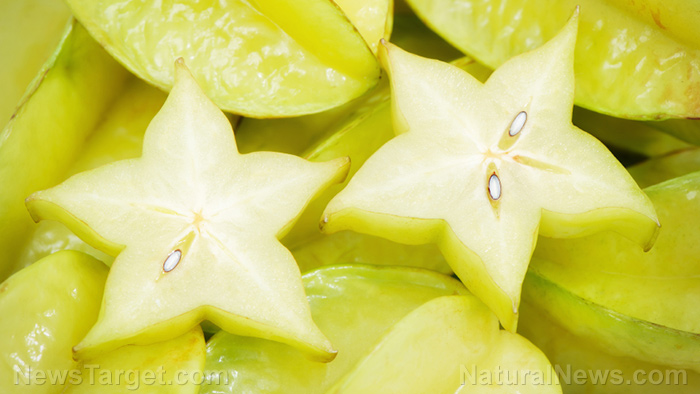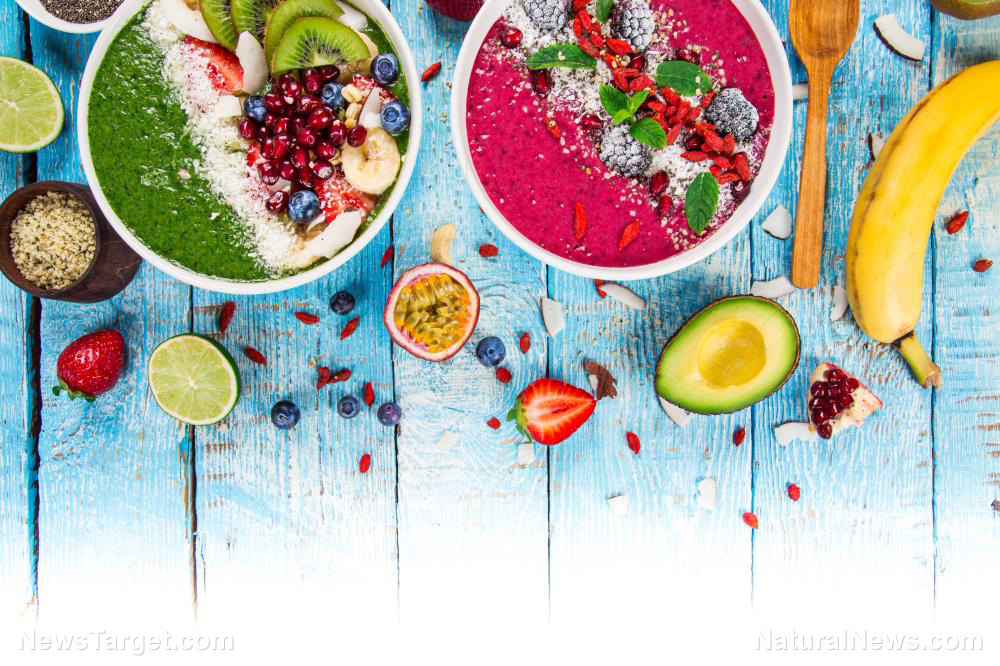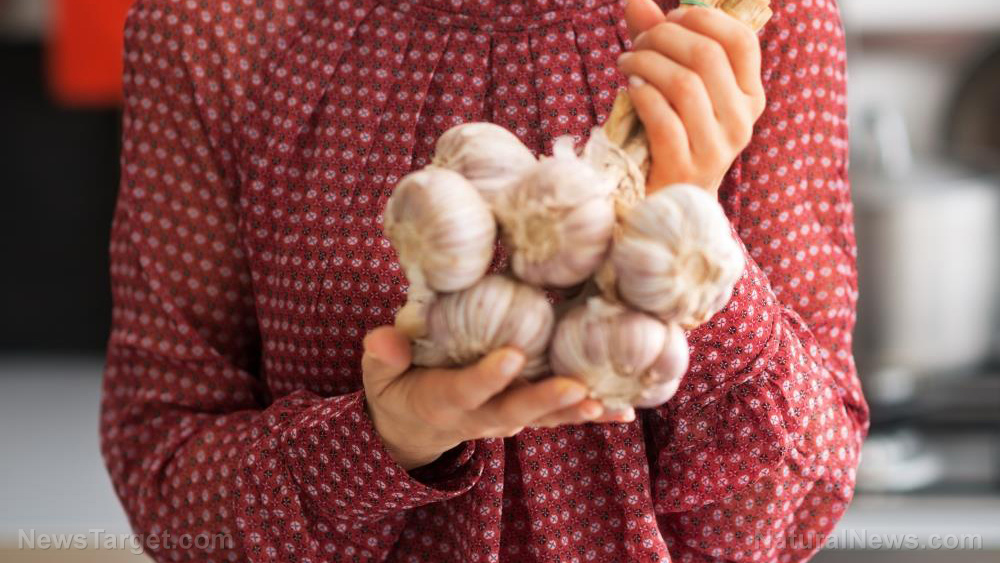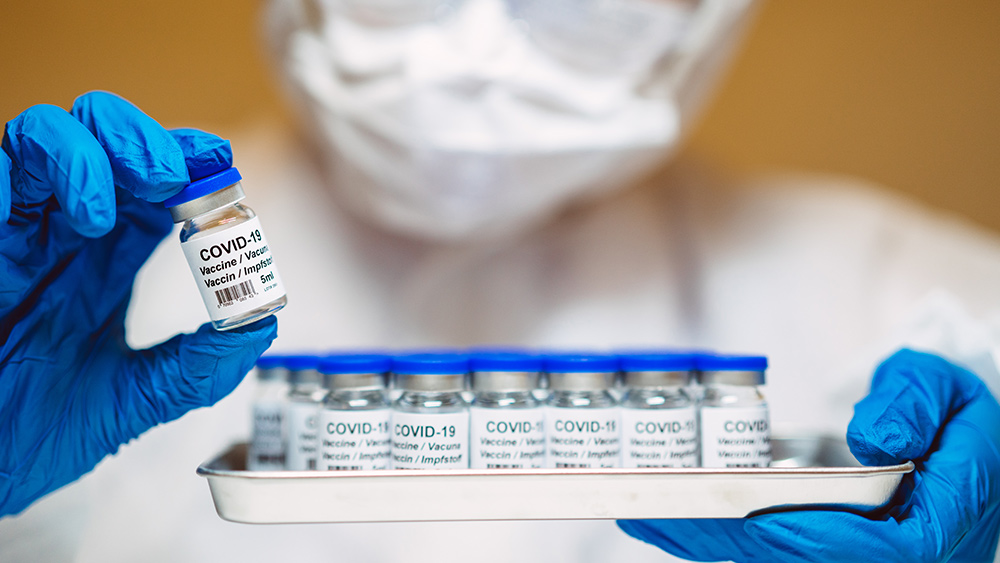 Parler
Parler Gab
Gab
- Carambola, commonly known as starfruit, is a tropical fruit celebrated for its star-shaped cross-section, vibrant yellow color and tangy-sweet flavor.
- It is both visually appealing and nutrient-rich, making it a favorite among culinary enthusiasts and health-conscious individuals.
- Believed to have originated in Southeast Asia (Sri Lanka, Indonesia and Malaysia), carambola has been cultivated for centuries.
- Carambola is rich in essential nutrients like vitamin C, vitamin A, potassium and dietary fiber. It also contains phytonutrients and antioxidants.
- Carambola’s unique flavor and aesthetic appeal make it suitable for both sweet and savory dishes.
Carambola, commonly known as starfruit, is a tropical gem that has captivated both culinary enthusiasts and health-conscious individuals alike.
With its distinctive star-shaped cross-section, vibrant yellow hue and tangy-sweet flavor, carambola is not only a feast for the eyes but also a powerhouse of nutrients.
The carambola fruit: A closer look
Carambola (Averrhoa carambola) is easily recognizable by its elongated, five-ridged shape, which, when sliced crosswise, forms perfect star-shaped pieces. The fruit’s skin is thin and waxy, ranging in color from green when unripe to a bright, golden yellow when fully ripe. The flesh is translucent, juicy and crisp, with a flavor that balances sweetness and tartness. Depending on the variety, the taste can range from mildly sweet to intensely tangy, making it versatile for various culinary applications.Historical and cultural significance
Carambola is believed to have originated in Southeast Asia, particularly in Sri Lanka, Indonesia and Malaysia. Historical records suggest that it has been cultivated for centuries, with its cultivation spreading to other tropical and subtropical regions, including India, the Philippines and South America. The fruit was introduced to Florida in the late 19th century, where it thrived in the warm, humid climate. Today, carambola is grown in tropical regions worldwide, including parts of the Caribbean, Central America and Hawaii. The fruit's name, "carambola," is derived from the Sanskrit word "karmaranga," meaning "food appetizer." Its star-like shape has made it a popular garnish and decorative element in culinary presentations, while its unique flavor profile has earned it a place in both sweet and savory dishes. (Related: Superfruits for good health: Boost your daily protein intake with delicious apple cinnamon muffins.)Nutritional profile and phytonutrients
Carambola is more than just a visually striking fruit. It is packed with essential vitamins, minerals and phytonutrients that contribute to overall health. Among its most notable nutrients are vitamin C, vitamin A, potassium and dietary fiber. Additionally, carambola contains a variety of phytonutrients, including flavonoids, phenolic acids and antioxidants such as quercetin, epicatechin and gallic acid. These compounds play a crucial role in combating oxidative stress and inflammation, which are underlying factors in many chronic diseases.Health benefits and potential therapeutic use
Below are some of the health benefits associated with the consumption of carambola:- Anti-cancer properties – The presence of quercetin and other flavonoids has been linked to reduced cancer risk by inhibiting the growth of cancer cells and promoting apoptosis (programmed cell death).
- Supports optimal heart health – Potassium helps regulate blood pressure, while antioxidants reduce inflammation and prevent the oxidation of LDL (low-density lipoprotein) cholesterol, lowering the risk of cardiovascular diseases.
- Boosts immune function – The high vitamin C content in carambola supports immune health by enhancing the production of white blood cells and acting as an antioxidant to protect cells from damage.
- Promotes optimal digestive health – The dietary fiber in carambola aids in digestion by promoting regular bowel movements and preventing constipation.
- Aids in weight management – Low in calories and high in water content, carambola is an excellent addition to a weight-loss diet, providing satiety without excess calories.
Culinary applications and recipe ideas
Carambola’s unique flavor and aesthetic appeal make it a versatile ingredient in both sweet and savory dishes. Here are some tasty recipe ideas to inspire your culinary adventures:- Carambola chutney – Simmer carambola with garlic, ginger and spices to create a flavorful chutney that complements roasted meats or cheese platters
- Carambola salsa – Dice carambola and mix it with cilantro, onions, tomatoes and lime juice for a tangy salsa that pairs well with grilled fish or chicken.
- Starfruit and avocado salad – Combine sliced carambola with avocado, mixed greens and a citrus vinaigrette for a refreshing and nutrient-packed salad.
- Starfruit tart – Use thinly sliced carambola as a decorative topping for a creamy tart filled with vanilla custard or coconut cream.
- Tropical starfruit smoothie – Blend carambola with coconut water, mango, pineapple and a bit of honey for a tropical treat.
More related stories:
Support eye health with pumpkin, a superfood source of beta carotene. Grapes: A simple fruit with an impressive list of health benefits. Winter detox tips using superfoods and adaptogens. Sources include: Brighteon.AI NaturalNews.com Brighteon.comCustard apple: A nutrient-packed superfruit with ancient roots
By Zoey Sky // Share
Clogged arteries? Five ways garlic can help
By News Editors // Share
Bioweapons researcher from Wuhan Institute of Virology comes forward with startling revelations
By Lance D Johnson // Share
Exposed: How U.S. tax dollars funded bioweapons research and COVID-19’s origins
By Willow Tohi // Share
Governments continue to obscure COVID-19 vaccine data amid rising concerns over excess deaths
By patricklewis // Share
Tech giant Microsoft backs EXTINCTION with its support of carbon capture programs
By ramontomeydw // Share
Germany to resume arms exports to Israel despite repeated ceasefire violations
By isabelle // Share










